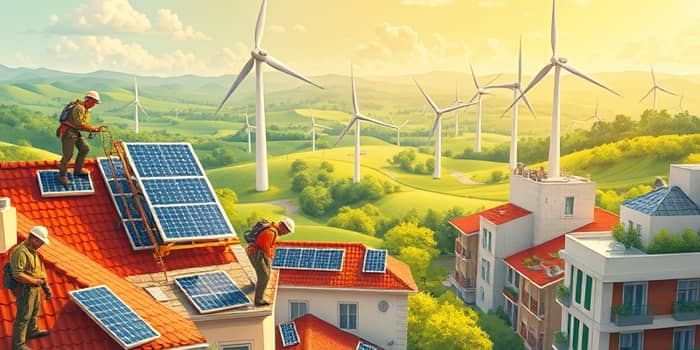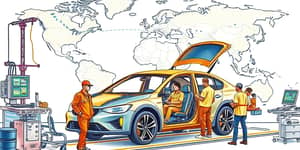
Climate policies and targeted investments are igniting an unprecedented transformation in the global labor market. From solar farms in the American Midwest to energy-efficient retrofits in European cities, a new wave of careers is emerging. These opportunities not only tackle climate change but also foster sustainable economic growth and stability for millions of workers.
Governments, businesses, and communities are aligning around transformative public and private partnerships that drive innovation, cut emissions, and generate well-paying positions. As the green economy accelerates, understanding the trends, challenges, and prospects becomes essential for policymakers, educators, and job seekers alike.
Worldwide, green initiatives are projected to create 34 million jobs by 2030. Simultaneously, demand for specialized skills is set to skyrocket, with green skills vacancies climbing from 67 million in 2025 to 241 million by the end of the decade. This mismatch between roles and talent highlights both an opportunity and a pressing need for workforce development.
Factors driving this expansion include:
The most dynamic segments of the green economy are centered around energy production, efficiency, and infrastructure. These areas are not only creating jobs but reshaping entire supply chains.
Different regions are capitalizing on unique advantages to spearhead green job growth. In the United States, the Inflation Reduction Act alone is expected to create more than 9 million jobs over the next decade, nearly 5 million of which will arise from clean energy ventures. California has become a national leader in solar and storage deployment, though policy shifts occasionally challenge project continuity.
Internationally, emerging economies in Asia and Latin America are incorporating renewable energy targets into development plans, producing both infrastructure investments and educational programs. These efforts underscore the notion that green employment is not confined to high-income nations—it is a global imperative.
The clean energy transition is giving rise to specialized roles that did not exist a decade ago. Jobseekers with technical training, adaptability, and a commitment to sustainability are finding abundant opportunities in these fields.
Despite robust growth, the green workforce faces a persistent skills gap across key industries. Projections show that while green job openings may rise by 260% over five years, corresponding skill development is expected at only 60%. Bridging this divide demands collaboration between governments, educational institutions, and the private sector.
Critical measures include:
Green jobs extend benefits far beyond the individuals employed. They foster sustainable economic resilience by diversifying local economies, reducing dependence on imported fuels, and stabilizing energy costs. Moreover, each position contributes to national climate targets by lowering greenhouse gas emissions.
In regions with strong clean energy sectors, unemployment rates have fallen as new training centers and manufacturing hubs emerge. These centers often serve as innovation incubators, delivering advances in battery storage, smart grids, and carbon capture.
Ensuring that the clean energy revolution leaves no one behind is both a moral and strategic priority. Inclusive policies can guarantee that workers from coal, oil, and heavy industry can transition into green careers with minimal disruption. Local partnerships, community outreach, and targeted funding all play roles in achieving this aim.
Key strategies for equity include retraining programs, wage support during job transitions, and prioritizing investments in historically marginalized regions. By focusing on equitable workforce development pathways, policymakers can cultivate a robust green economy that serves everyone.
The surge in green job creation driven by climate policy investments is reshaping global labor markets and accelerating the path to a sustainable future. From solar fields to urban retrofits, opportunities abound for workers ready to embrace change.
Addressing the skills gap through coordinated education and policy efforts will determine the success of this transition. With forward-thinking leadership, public-private collaboration, and community engagement, the promise of millions of quality green jobs can be fully realized—powering our economies while protecting the planet for generations to come.
References













